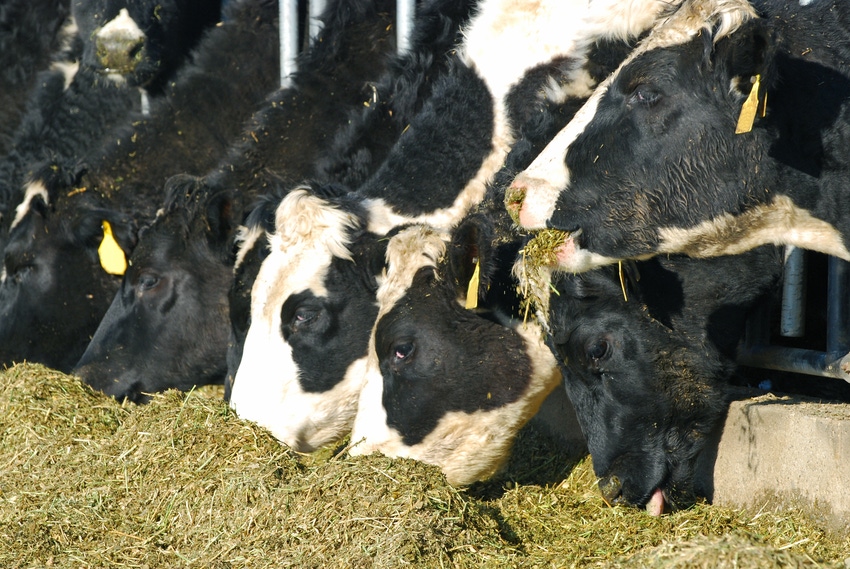Acceptable growth performance may be achieved in pregnant Holstein heifers limit-fed high-forage diets.

Managing dairy heifers, especially bred heifers, means maintaining an appropriate balance between the heifer's requirements for growth while limiting excessive conditioning, which may affect performance in subsequent lactations.
Researchers W.K. Coblentz with the U.S. Dairy Forage Research Center and M.S. Akins and N.M. Esser with the University of Wisconsin recently studied the effects of feed bunk management and feed push-up frequency on the growth performance of pregnant Holstein dairy heifers.
Coblentz et al. noted that, conceptually, there are two feeding strategies for avoiding over-conditioning in dairy heifers that can be problematic for pregnant dairy heifers, which have reduced dietary energy density requirements relative to younger animals: (1) diluting the ad libitum-fed diet with low-energy forages, or (2) offering a diet with greater nutrient density but intentionally restricting the dry matter available for consumption (limit feeding).
For their study, Coblentz et al. enrolled 128 Holstein heifers (initial bodyweight of about 434 kg), which were blocked by weight and assigned to one of 16 identical research pens, with four pens per weight block and eight heifers per pen.
Within each block, a 2 x 2 factorial arrangement of treatments was assigned; treatments consisted of full or restricted feed bunk access and feed push-up frequency of 1.5-hour or 3.0-hour intervals, the researchers said. The restricted treatment was applied by covering two of the eight head-locking feed gates in assigned pens with plywood partitions, thereby creating a feed bunk stocking rate of 133%.
A total mixed ration diet composed of alfalfa haylage (60.5%), corn silage (38.0%) and mineral (1.5%) was offered once daily for 91 days, the researchers said, noting that daily feed allotments were generally consumed entirely within nine hours of feeding.
According to Coblentz et al., nutrient intakes were not affected by push-up frequency or the interaction of main effects, but all intakes were affected by feed bunk access, except for dry matter and neutral detergent fiber expressed as a percentage of bodyweight (overall means = 1.93% and 0.80%, respectively).
They explained that in each case, intakes for full feed bunk access were greater than those observed for the restricted treatment; for dry matter intake, this amounted to a difference of 0.20 kg per day between those main-effect treatments.
After 91 days, heifers without feed bunk restriction exhibited greater final bodyweight, but total gain and average daily gain differed only numerically between the full-access and restricted treatments, Coblentz et al. reported.
They noted that in this trial, heifer bodyweights were relatively uniform within each pen, and head-locking feed gates were used, which also provided some protection from adjacent aggressive heifers, suggesting that such measures influenced the amount of stress the heifers were under.
Coblentz et al. concluded that heifers can exhibit acceptable growth performance on high-forage diets in a limit-feeding program that includes moderate feed bunk restriction, provided that other stressors are minimized.
The research was recently published in the Journal of Dairy Science.
About the Author(s)
You May Also Like

.png?width=300&auto=webp&quality=80&disable=upscale)

